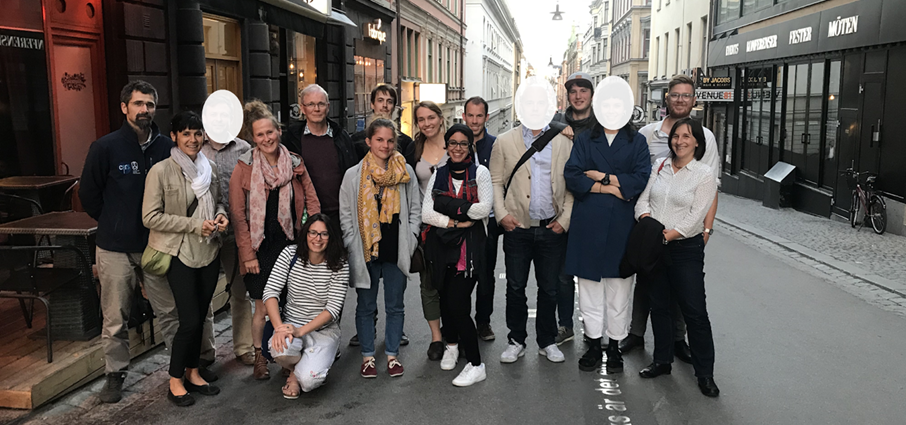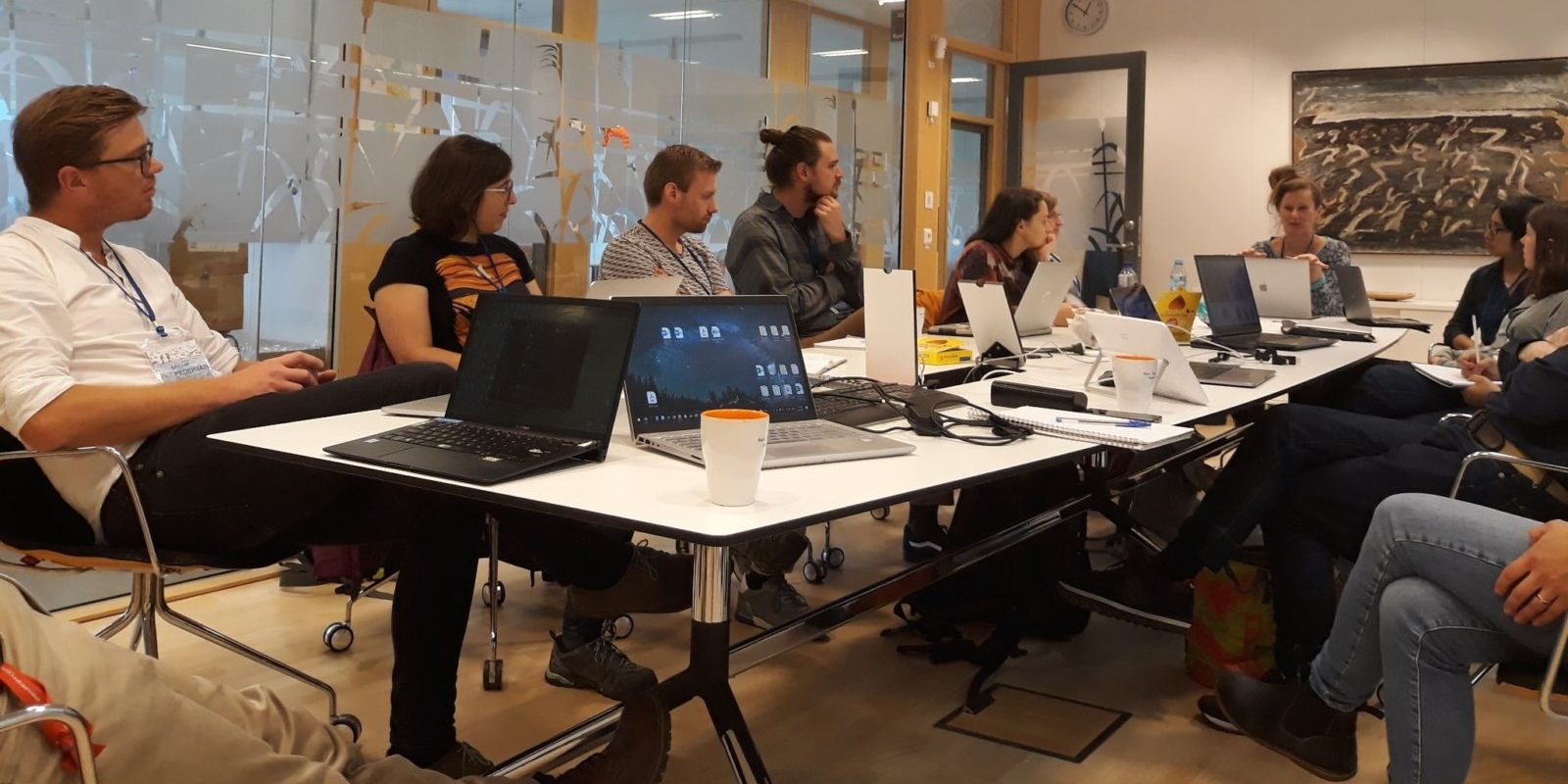Emergence of the field of molecular paleoecology
Sequencing DNA of organisms that died a long time ago sounds like the synopsis of the movie Jurassic Park (1993). Let’s make it clear right now, dinosaur DNA has never been collected by humans. To date, the oldest DNA recovered is more than one million years old and comes from mammoths. In addition to the DNA recovered from fossils, aquatic and terrestrial environments have rich deposits of DNA. These sedimentary DNA archives are created through the accumulation of the carcasses of dead organisms and detrimental organic matter, which can preserve DNA molecules for, at least, up to 700 000 years.
Two decades ago, Marco Coolen (Woods Hole, Curtin Univ) and Eske Willerslev (Copenhagen Univ) pioneered the field of molecular paleoecology by finding ancient DNA from aquatic sediments and permafrost. The number of works using the sedimentary ancient DNA (sedaDNA) escalated in the mid-2010s and is now used to study the dynamics of past ecosystems and human populations.

Figure 1. Summary of the main steps of the molecular paleoecology approach. Sediment coring can be conducted in aquatic environments,as illustrated here, but also from terrestrial environments such as caves or permafrost. Figure modified from Capo, Monchamp et al. 2022.
The creation of the sedaDNA scientific society
Created in 2021, the sedaDNA scientific society is a safe, friendly and useful virtual platform for scientists working with sedaDNA approaches. I provide below a short description about the events that led to the creation of the society. Pre-existing international collaborations between research groups facilitated its creation. Here, I describe what led me to be the founder of the society.
During my PhD in France (2013-2016) under the supervision of Isabelle Domaizon, I studied the long-term dynamics of microbial eukaryotes using lake sedimentary DNA. In 2017, I pursued this line of research during my first post-doc at Umeå University (Sweden). At this time, although international networks of paleolimnologists, limnologists, and (microbial) ecologists were strong and active at this time, no organization focused on sedimentary DNA research existed despite it being a rapidly expanding research field. In 2018, I had the opportunity to meet two established sedaDNA experts: Inger G Alsos (UiT Tromsø) and Laura Parducci (Uppsala Univ, Sapienza Univ of Rome). In July 2018, Mikkel Winther Pedersen (Copenhagen Univ) held a sedaDNA session at the IPA-IAL conference and successfully built strong connections between participants by organizing an evening event (Figure 2). In 2019, Charline Giguet-Covex (EDYTEM, France) gave a seminar at Umeå University, and that was the start of the first collaborative project of this scientific community (Capo et al. 2021), as well as the beginning of the “Sedimentary DNA” newsletters, now managed by Kevin Nota. In 2020, Jack W Williams (Madison Univ, USA) and colleagues held a workshop to build a cyberinfrastructure to incorporate sedaDNA data in the Neotoma paleoecology database, and this led to the start of numerous virtual seminars by sedaDNA experts during the course of 2020. When our review paper was published in January 2021, I decided to merge initiatives together (newsletter, virtual seminars, literature surveys, a platform of discussion for collaborative projects) and that led to the creation of the sedaDNA scientific society in February 2021. At this time, I had the support of many researchers including Peter Heintzman, Alexandra Rouillard, Laura Epp, Trisha Spanbauer, Kathleen Stoof-Leichsenring and many others. Without the support of this research and many others, it would never have been possible to establish this network. New people joined along the way and some took responsibilities in the activities of the society. For example, PhD students (Jordan Von Eggers, Ines Barrenechea Angeles, Mailys Picard) are/were organizing PhD series seminars in different time zones.

Figure 2. Some participants of the sedDNA session at IPA-IAL 2018 (Stockholm). From left to right: Fabien Arnaud, Isabelle Domaizon, Maarten van Hardenbroek, Alexandra Rouillard, Göran Englund, Charline Giguet-Covex, Claire Blanchet, Fredrik Olajos, Sarah Crump, Anan Ibrahim, William Rapuc, Jonatan Klaminder, Eric Capo, Rose Gregersen, Mikkel W Pedersen and Laura Epp.
Doing research is wonderful. Doing collaborative research is even better.
The first aim of the sedaDNA scientific society is to share information about this research field and make newly published papers directly visible by our community and beyond. We communicate mainly via a Google Group address, Twitter and a Slack workspace. In addition to shared information, members of this society have started different collaborative projects with benefits for the advancement of the field of molecular paleoecology. Including the creation of the PAGES PaleoEcoGen working group, led by Marie-Eve Monchamp, the African sedaDNA working group, and the writing of the book “Tracking environmental change using lake sediments Vol 6 Sedimentary DNA” with editors Cecilia Barouillet, John P Smol and myself. We held a first society meeting at Uppsala (Sweden) in October 2021 that contributed to strengthening collaborations within the society (Figure 3).

Figure 3. Minisymposium “Recovery of DNA from sedimentary archives” 4th October 2021. From left to right: Mikkel W Pedersen, Sandra Garcés-Pastor, Youri Lammers, Lucas Elliott, Ioana Meleg, Alexandra Rouillard, Ines Barrenechea Angeles, Jordan Von Eggers.
Creating a network, coordinating a society board, and starting new collaborative projects take A LOT of time, especially during the inaugural year. Some could view this as a waste of time, and that I should have spent more time doing actual research. At least in this case, I think there are many more benefits than disadvantages regarding the time spent on building this society. More than 1.8 million peer-reviewed scientific papers are published each year. We need to make our research visible and, to do that; strategies are either to publish in highly recognized journals or to be good at sharing your new papers. Being the founder and coordinator of this society had a direct significant impact on the visibility of my research papers, and then the number of citations of my papers. I would therefore advise early-career researchers to take active roles in any scientific organizations of interest for them (e.g., EGU, AGU, ISME, ASLO, SIL). I would conclude by saying that favouring collaboration rather than competition in research is, in my opinion, the best path for a long and joyful career in academia.

Crystal
❤️